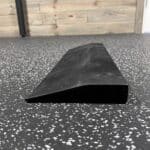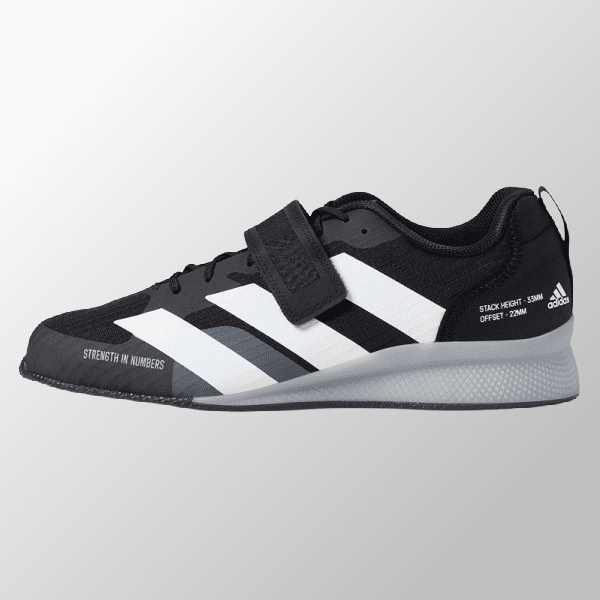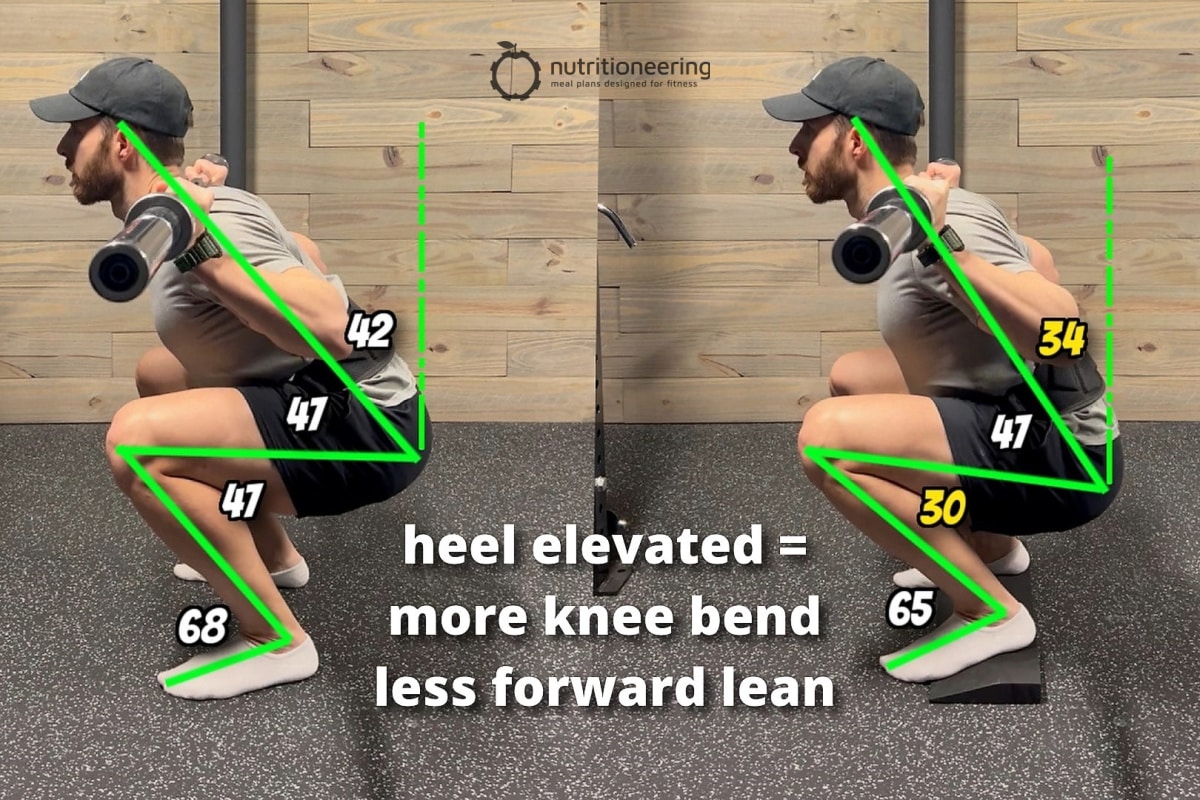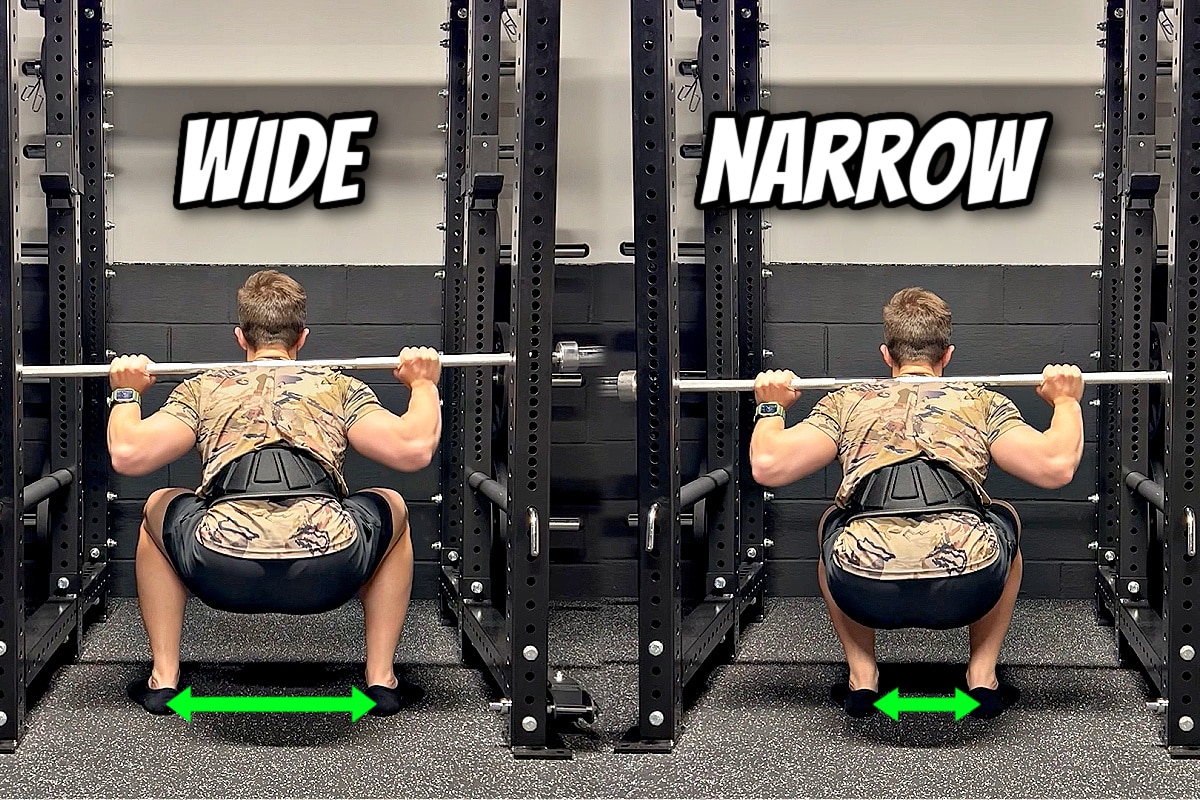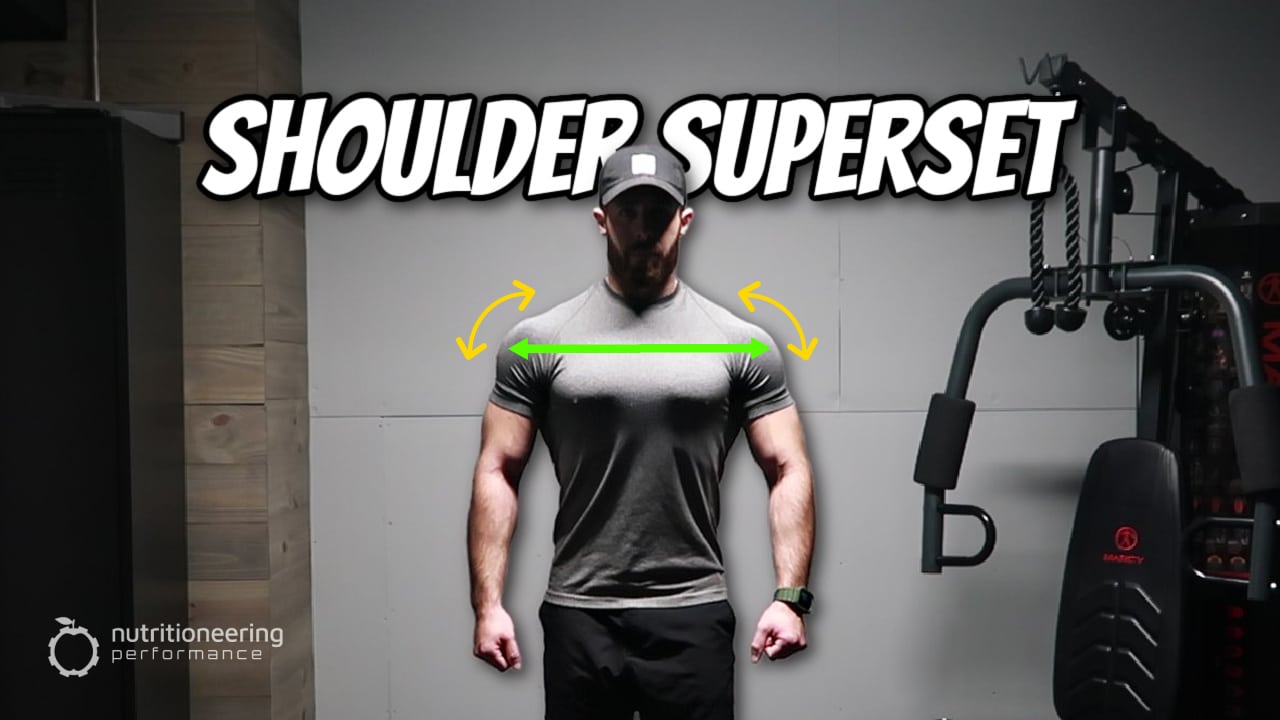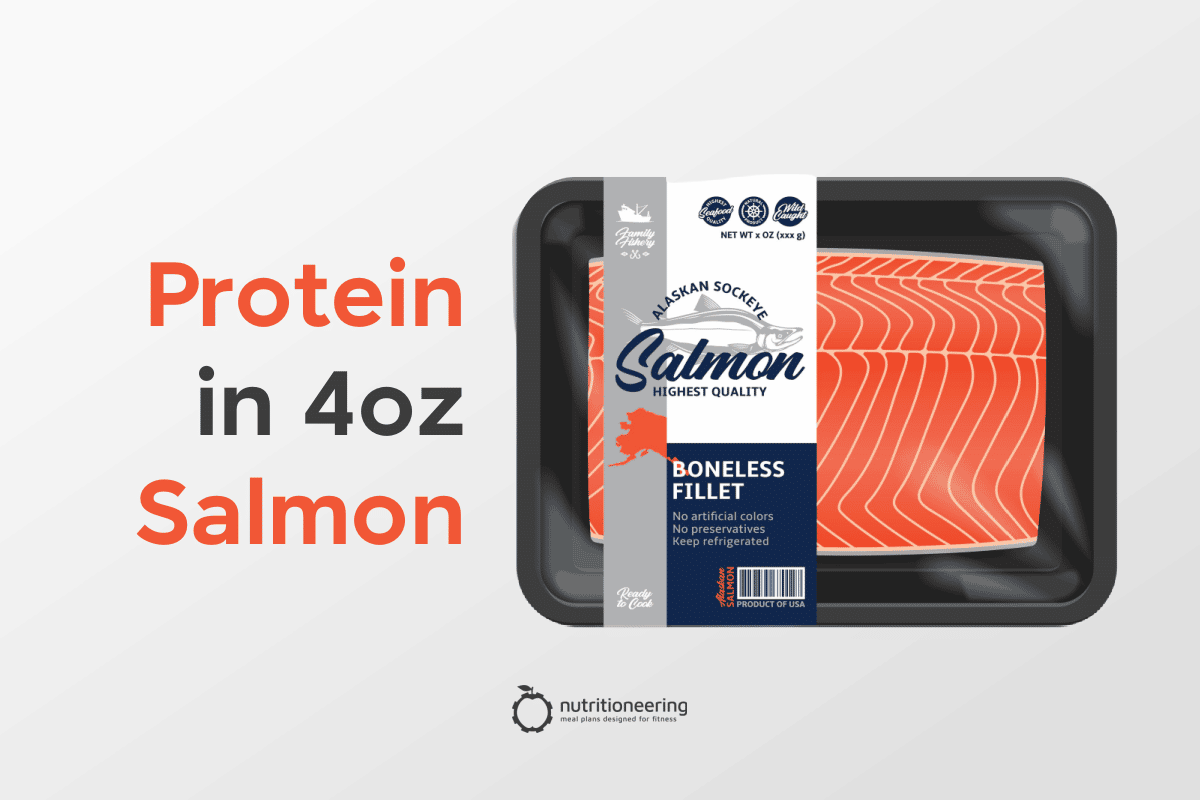Heel Elevated Squats
Personal Trainer Explains How & When to Use This Technique
By: Jeremy Fox, CNC, CPT – Published: March 7, 2023
The back squat is one of the most effective exercises for strengthening your lower body. But it can also be one of the most challenging movements to perfect, with seemingly unlimited variations.
Understanding how different squat variations compare to one another is critical to making this exercise work for your body and your fitness goals.
Heel elevated squats are a potential game-changer for people who struggle with squats. And they can help even experienced lifters unlock new gains.
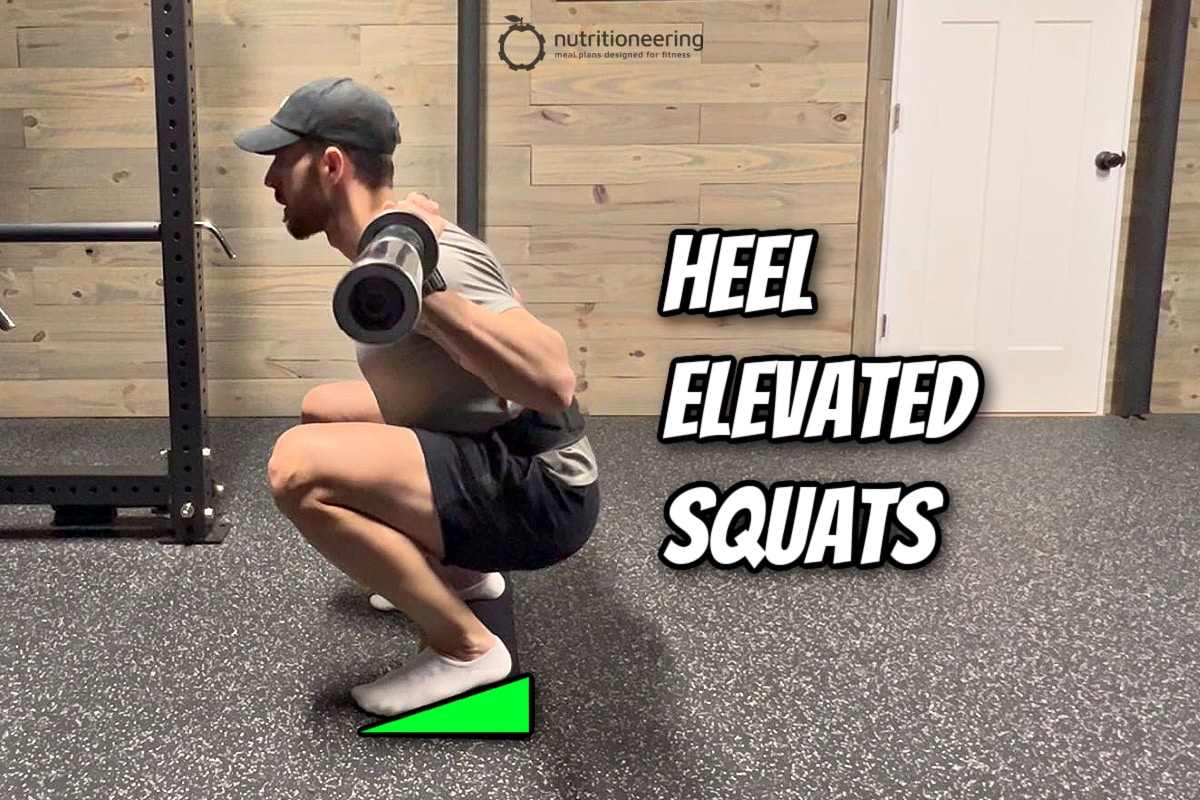
This page contains affiliate links. If you purchase it through my links, I will receive a small commission at no extra cost to you.
What Are Heel Elevated Squats?
Heel elevated squats are an exercise variation where your heels are raised off the floor by standing on weight plates or using wedges.
This change in foot angle alters the squat mechanics in a way that helps lifters achieve a greater range of motion and puts more emphasis on the quadriceps muscles.
In addition, heel elevated squats can help correct mobility issues that cause squat form and depth issues.
Heel Elevation Methods
Depending on your equipment and desired outcomes, there are a few different ways to elevate your heels during squats. Some of the most common are weight plates, wedge boards, and squat shoes.
Weight Plate Heel Elevation
Using weight plates to elevate your heels during squats is a practical starting point because you don’t need any special equipment.
In addition, you can use different size plates based on how much heel elevation you want. The larger the plate, the more elevated your heel.
Here’s how much your heel will elevate for various cast iron plates:
Table 1. Weight Plate Heel Height
| Plate Size | Heel Height |
|---|---|
| 2.5lb (1.1kg) | ½” (13mm) |
| 5lb (2.3kg) | ¾” (19mm) |
| 10lb (4.5kg) | 1″ (25mm) |
| 25-45lb (11.3-20.4kg) | 1-½” (38mm) |
Of course, these numbers could be different with rubber-coated weights. But the idea is that weight plates allow you to choose the amount of heel elevation. And you’ve probably already got them on your squat rack.
However, the downside to using plates is that getting them in the correct position can take time. And they hurt your feet if you have thin shoes or squat barefoot.
Wedge Block Heel Elevation
Wedge blocks are wood, plastic, or high-density foam ramps designed to go under your feet during heel elevated exercises. And they come in various thicknesses to fit your needs.
Some wedge blocks are wide enough for both feet, while others come in pairs – one for each foot. You can also use these blocks to elevate your toes for exercises like calf raises.
The benefit of wedge blocks is that you can change the heel elevation by putting more or less of your foot on the ramp. But using two ramps causes the same setup challenge as using weight plates.
Below are images and dimensions of a Motion Molds wide wedge block I purchased on Amazon. It’s made of dense foam that doesn’t compress under weight yet is soft enough that it’s comfortable to use without shoes.

This squat wedge block is 23″ wide, plenty of space for even wide stance squats.
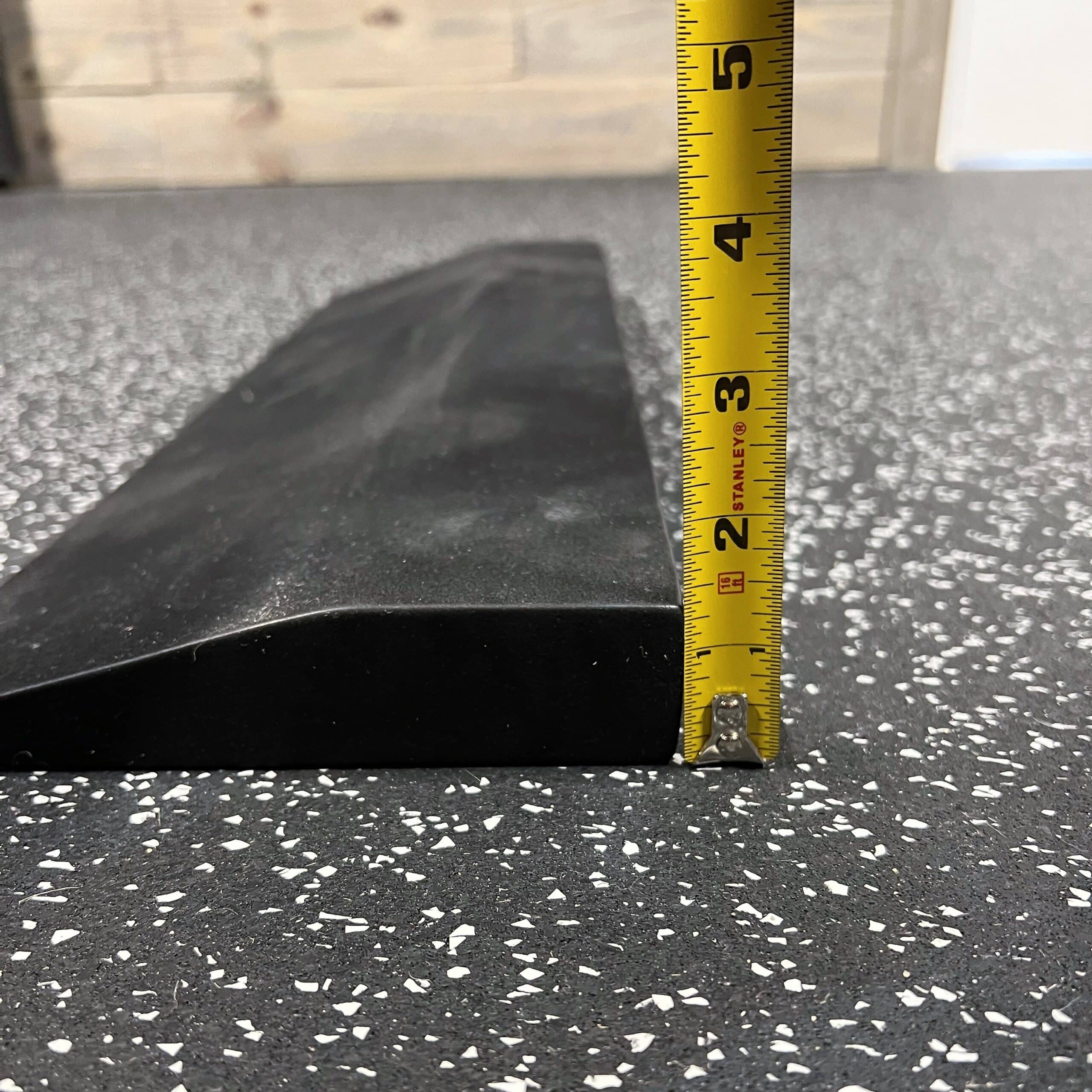
At about 1.5″ thick, this block provides plenty of height for heel elevated squats or calf raises.
Also, the flat top makes it ideal for doing calf raises. I use this wedge block multiple times per week in my home gym.
There are some steeper squat wedges available if you want to maximize knee bend. But I’ve found that going too steep makes you feel less stable and puts too much stress on the knees.
Squat Shoe Heel Elevation
Squat shoes are specially designed with an elevated heel and firm sole. These features help improve your squat technique without needing blocks or wedges.
However, squat shoes can cost up to $200 and elevate your heels 0.5 to 0.85″ (13-22mm). So they are not as practical or versatile as plates and wedges.
Still, weightlifting shoes can be a good investment for someone who doesn’t want to mess with equipment on the floor and only needs the minimum heel elevation.
How to Do Heel Elevated Squats
To do heel elevated squats, start by centering the barbell comfortably on your upper traps and shoulders. Then lift the bar off the squat rack and step back.
Next, position your feet hip-width to shoulder-width apart, with your heels elevated 0.5-2.5 inches. Point your toes straight forward or out slightly.
Now push your hips back and bend at the knees to lower weight while maintaining a relatively straight back. As your thighs approach parallel to the floor, extend your knees and drive your hips forward to raise the weight back to the starting position.
While you perform the squat, keeping your knees directly in line with your ankles is advisable. That is, try not to let your knees angle too far inward or outward.
Here’s how to do heel elevated squats step by step:
- Place bar on shoulders as usual
- Elevate heels 0.5-2.5 inches
- Push hips back and bend knees to squat
- Keep spine neutral and back relatively upright
- Lower weight until thighs are at least parallel to floor
- Extend knees and drive hips forward to lift weight
Flat vs Heel Elevated Squats
A small change in heel height can significantly impact your range of motion and how your muscles work during the exercise.
So let’s examine the body movement, range of motion, muscles worked, and strength for flat footed vs heel elevated squats.
I’ll cover each area in detail in the sections below. Or you can get the overview by watching this 1-minute video.
My YouTube channel has dozens of videos showing you how to do a variety of bodybuilding exercises. You’ll learn how to target and build specific muscle groups in 90 seconds or less. Click HERE to subscribe, or click on the button below!
Flat vs Heel Elevated Squats Range of Motion
Many lifters don’t achieve full squat depth with flat heel squats due to limited hip or ankle mobility. As a result, the range of motion of the knee joint is restricted when your feet are flat.
By comparison, most people find it easier to squat deeper with more knee bend while doing heel elevated squats1.
Flat vs Heel Elevated Squats Kinematics
The main difference between flat and heel elevated squats is how your body moves during the exercise, also called body kinematics.
With feet flat on the floor, your center of gravity is farther back, which causes your back to lean forward as you squat. Moreover, this results is your knees and hips bending roughly the same amount.
By comparison, heel elevated squats shift your center of gravity back slightly2, allowing a more upright back angle. So your knees bend more than your hips.
Heel elevated squats result in more effective knee depth without requiring more hip or ankle mobility. In addition, your back stays more upright during the heel elevated squat, alleviating stress on the lower back.
The images above clearly show what’s happening during a heel elevated squat. But I am only a sample size of one person, and not everybody moves the same.
A 2022 study had 20 participants perform flat squats and heel elevated squats while measuring joint angles and forces. The results varied between men and women, but men experienced lower hip and ankle forces with more knee forces3.
Table 2. Flat vs Heel Elevated Squat Joint Forces
| Squat Stance | Hip | Knee | Ankle |
|---|---|---|---|
| Heels Flat | 0.86 | 0.84 | 0.73 |
| Heels Elevated | 0.72 | 1.02 | 0.70 |

Flat vs Heel Elevated Squats Muscles Worked
The deeper knee bend of heel elevated squats generally results in more quadriceps activation during the exercise. Most notably in the vastus lateralis, or the outer sweep of the quad.
In addition, the toe’s downward position works the tibialis anterior (shin muscle) to a lesser extent than flat squats.
Interestingly, heel elevated squat muscle activation varies with gender, body proportions, experience level, and several other squat variables. So it would be best to experiment with this technique to see how it affects your results.

Flat vs Heel Elevated Squat Strength
If you have mobility or pain restrictions, the heel elevated squat may help you lift more weight on squats by reducing strain on your lower back.
However, experienced lifters with decent mobility will most likely have less strength on the heel elevated squat. The reason is that higher heel elevations can isolate the knee too much, reducing the involvement of the large hip muscle groups.
Heel Elevated Squats Pros & Cons
Based on the information presented so far, there are some clear benefits to using heel elevated squats. For example, elevating your heels improves your form by working around stiff joints and keeping your spine neutral.
In addition, heel elevated squats result in more isolated quadriceps activation compared to flat squats. So you could include close stance squats in your program to focus more on building your quads.
However, the higher degree of knee joint flexion could be problematic for people with knee problems. Also, narrow stance squats don’t engage the glutes as much. So you may want to stick with a flatter stance on glute-focused leg days.
Pros
- Requires less ankle and hip mobility
- Puts less stress on the lower back
- Easier to get more depth on squat
- More quad activation
Cons
- Potentially more stress on knees
- Not as much glute activation
Heel Elevated Squats FAQ
By now, I should have answered most of your questions about heel elevated squats. But I thought it would be good to answer some specific questions people commonly ask.
Is a higher heel better for squats?
Elevating your heels during squats can be better for working around hip and ankle stiffness while reducing stress on your lower back. And they can help you target your quads more during the exercise.
However, higher isn’t necessarily better. Studies suggest a minimum of 0.5 inches of heel elevation, and 1-1.5 inches typically produce more of the desired results.
There may be a point of diminishing returns above 1.5 inches, though, as steeper angles become more uncomfortable and isolate the knee joint too much.
Are heel elevated squats bad for knees?
Heel elevated squats put more stress on the knee joint than flat-footed squats. And this could be uncomfortable if you have existing knee problems.
However, heel elevated squats are not inherently bad for your knees. If you start light and progress to moderate weights, this variation can actually help strengthen the tendons in your knees.
Should I elevate my heels when squatting?
Whether you should elevate your heels during squats depends on your fitness goals. For example, heel elevated squats can help you achieve more range of motion and build your quads.
However, you should not use heel elevated squats if you’re using squats to build your glutes.
Are heel elevated squats good for glutes?
Heel elevated squats are not a glute-focused leg exercise. This is due to the fact that they do not increase hip rotation and keep your back in a more upright position.
What squat is best for glutes?
If your goal is to build your glutes, you should use squat techniques that increase hip rotation and decrease knee flexion. For example, you could use a low bar position or a wide stance.
High Bar vs Low Bar Squat
Another critical factor in setting up your squat is bar placement. The two standard options are a high bar or low bar squats.
As with foot placement, the barbell’s position on your back can significantly affect kinematics and muscle activation. So check out my article on high bar vs low bar squats!
Wide vs Narrow Stance Squat
You can also change the body mechanics and muscle worked during squats based on your stance width. Specifically, a wide stance works your body differently than a narrow stance.
So make sure you check out my guide and video showing you the differences between wide vs narrow stance squats.
More Squat Information
If you found this information helpful, I think you’ll also learn a lot from some of my other squat-related articles. Here is some additional reading that I’ve hand-picked for you:
Bulgarian Split Squat for Quads vs Glutes
Tom Platz’s Legendary Leg Workout
Best Smith Machine Squat Variations
With this information, you’re well on your way to building bigger quads and a stronger squat. If you’re ready to change gears, here are some additional resources for other fitness-related topics.
References 1) Monteiro, Pedro, et al. "Comparing the kinematics of back squats performed with different heel elevations." Human Movement 23.2 (2022): 97-103. 2) Todoroff, Max. "Dynamic deep squat: Lower-body kinematics and considerations regarding squat technique, load position, and heel height." Strength & Conditioning Journal 39.1 (2017): 71-80. 3) Lu, Zhenghui, et al. "Effect of Heel Lift Insoles on Lower Extremity Muscle Activation and Joint Work during Barbell Squats." Bioengineering 9.7 (2022): 301.

